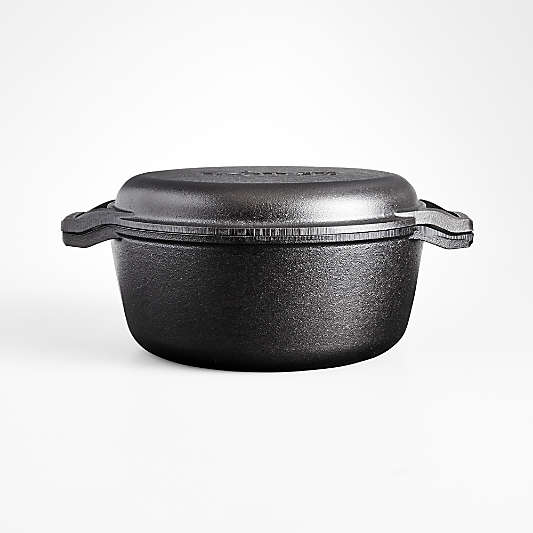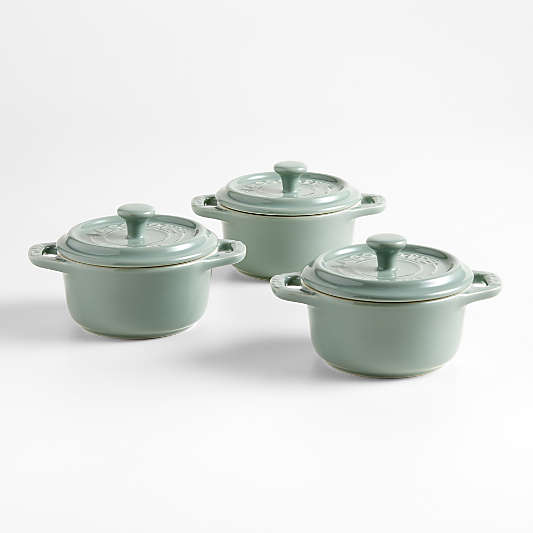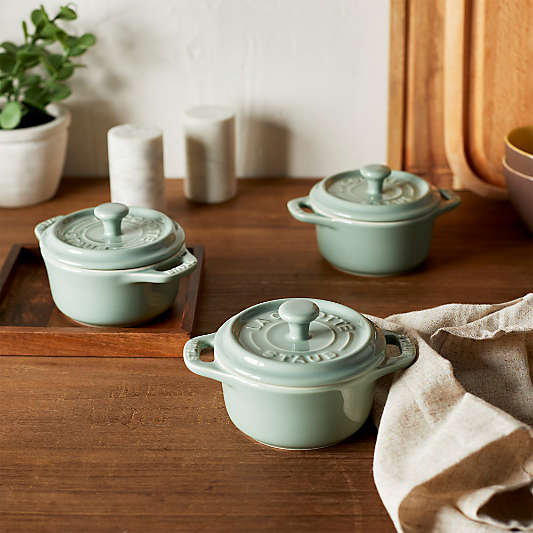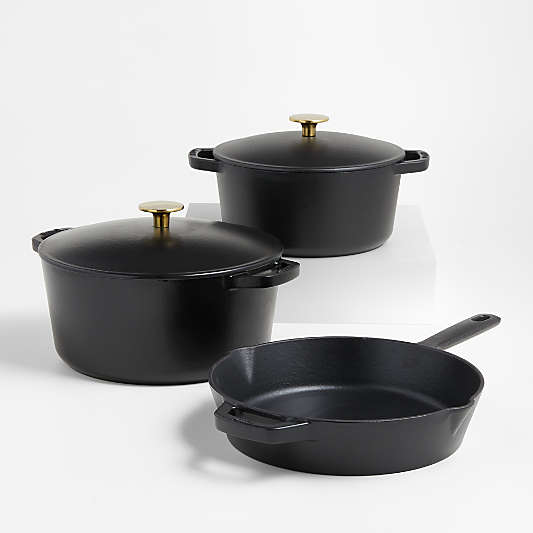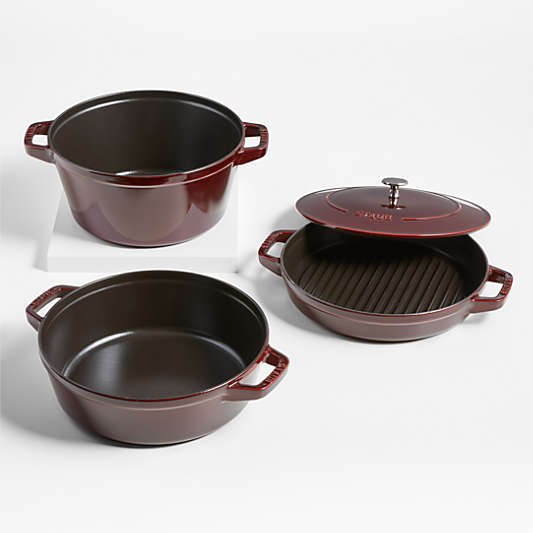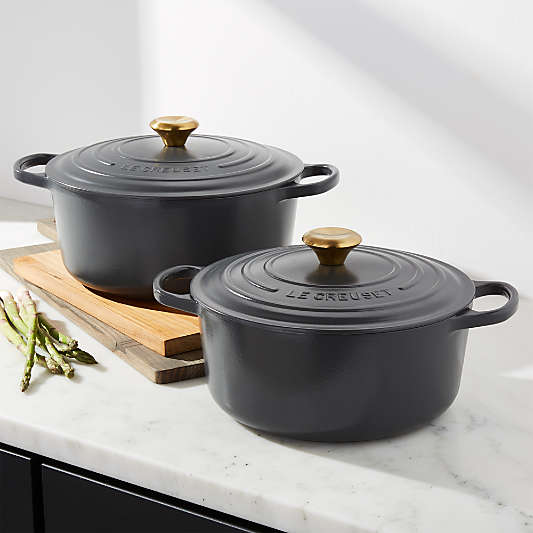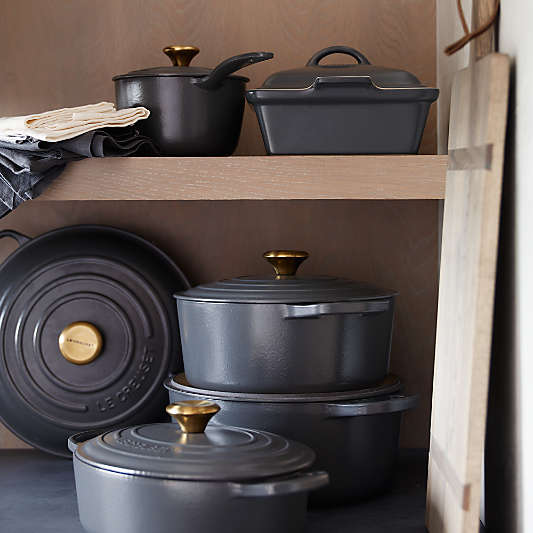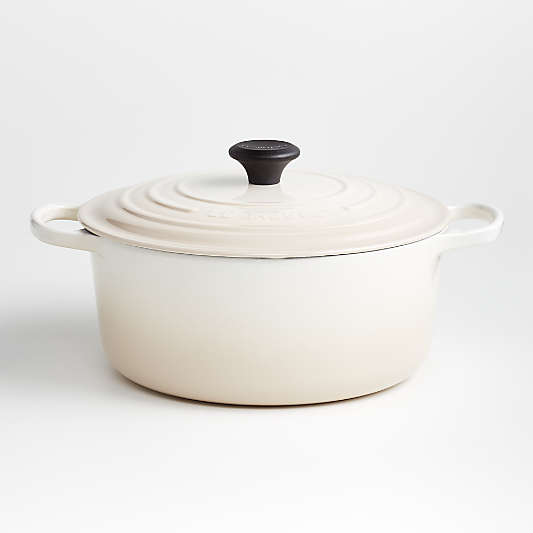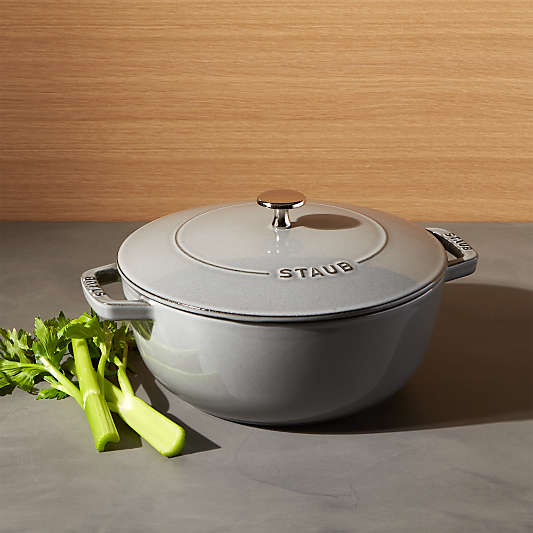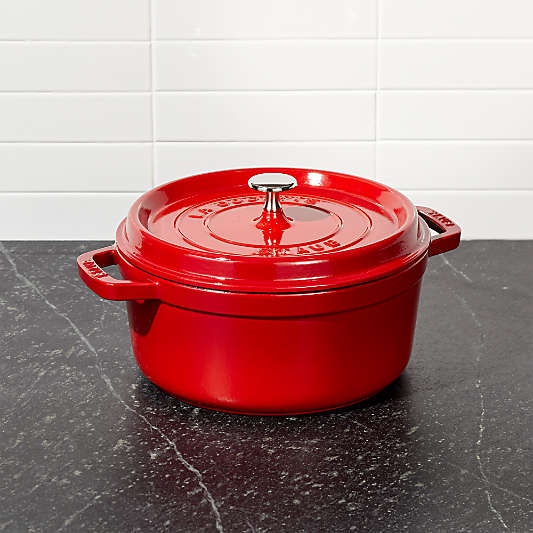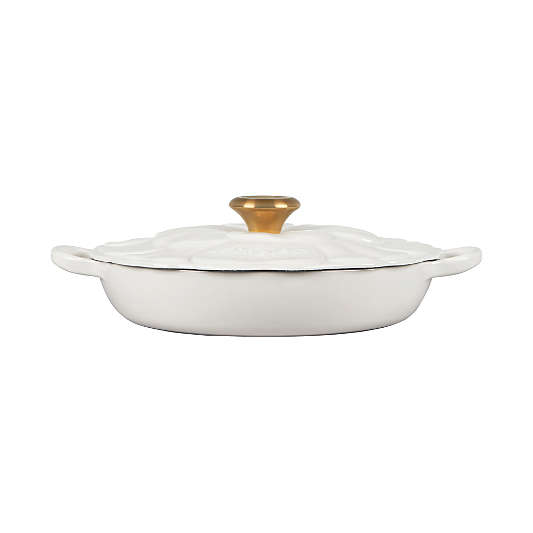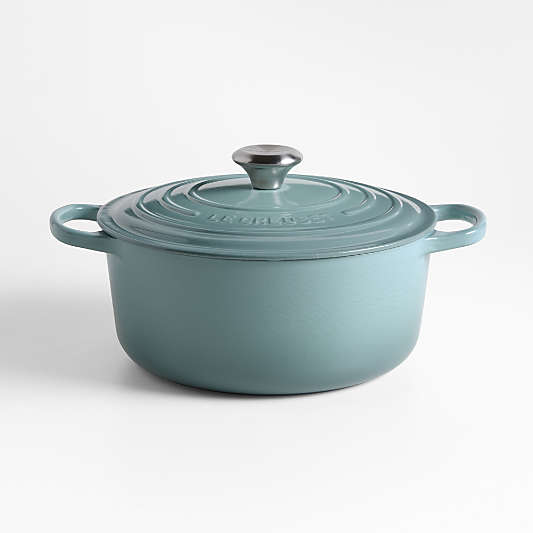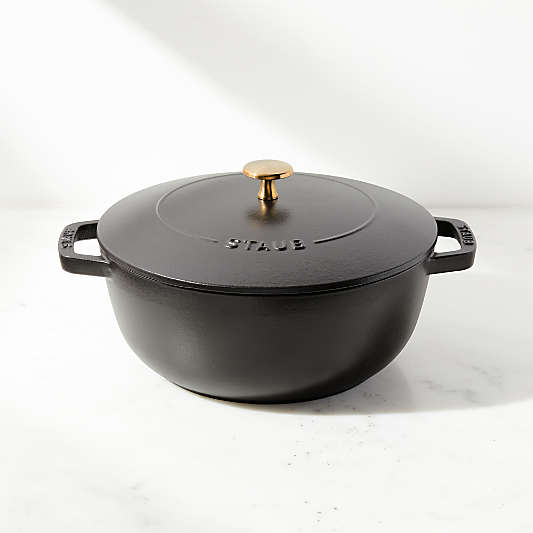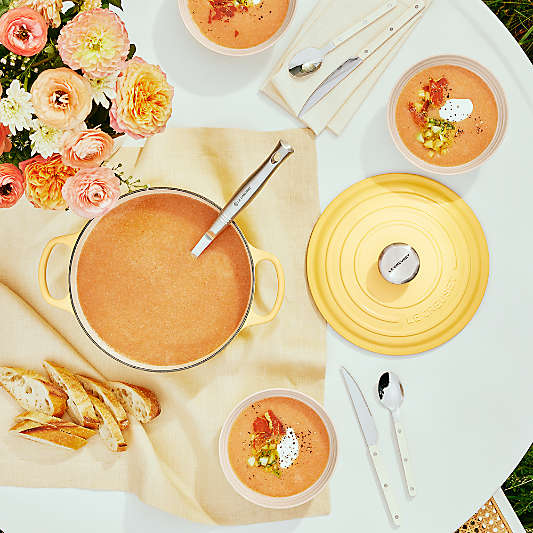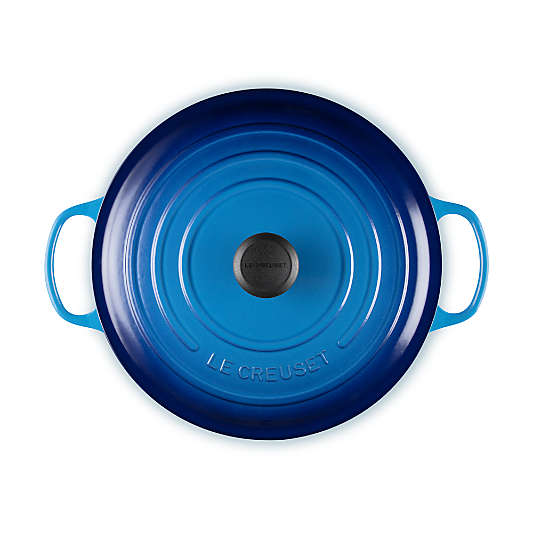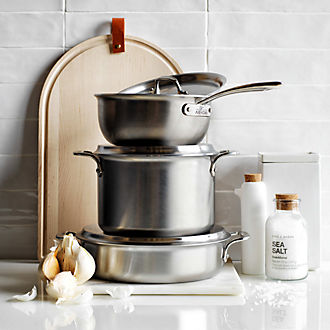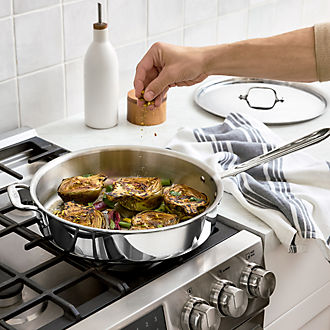Dutch Ovens and Braisers
Dutch Oven Guide
Is there anything more homey and comforting than a house filled with the rich aromas of mom's cooking in a dutch oven? The combined smell of sauces, meats, vegetables and spices—stored beautifully in spice racks—instantly makes a home atmosphere warm and pleasant. The slow cook of dutch ovens delivers those scents for hours on end, gradually ramping up to a final crescendo—a family-sized meal made with love, care and reliable cookware. Read on to learn about how to choose and care for a dutch oven to complete your cookware set.
Dutch Oven Material Comparison
Stainless steel makes for a lustrous, simple color and outer design, which will smoothly fit into any existing kitchen collection. Styles with an aluminum core make for even heating and hot spot elimination. Stainless steel is more lightweight than other cookware constructions and basic models are typically less expensive, too, making it an excellent material option for novice home cooks. Because stainless steel is not completely nonstick, most cooking will require added fat, but no-fat and low-fat cooking on the metal will result in a tasty browning on food, enriching broths and sauces.
Anodized aluminum, with its sleek, smooth exterior, looks chic on a modern stovetop. The anodizing makes the metal nonreactive, allowing you to cook nearly any food on it without worry of leached metals or harm to the bottom of the pot. Models with a nonstick coating provide all the durability of hard-anodized aluminum with the ease of nonstick pans. The nonstick helps you simmer the perfect soup, stew or sauce, as well as makes for easy care and cleanup.
Cast iron is a highly-durable, heavy-duty material that remains stable under high heat, even an open campfire flame. A "preseasoned" pan has been heated repeatedly with a layer of vegetable oil inside. The oil eventually hardens to a non-stick surface which not only makes cooking easier, but also prevents the cookware from rusting in your cupboard. This metal has high heat retention, even when removed from the burner, allowing it to keep food warm for longer.
Enameled Cast Iron, referred to as a French oven rather than Dutch, offers the durability and heftiness of seasoned cast iron, but its outer shiny porcelain enameling is bright and attractive—much less rustic than plain cast iron. Le Creuset dutch ovens, a leader in this form, offers a rainbow of colors from which to choose, which makes the cookware seem extra special and brings the kitchen to life. Similarly, Staub cocottes are versatile, durable and visually pleasing in the kitchen.
Use and Care: Tips and Tricks
Recipe Ideas: The pots are superior vessels for soups, stews and sauces because of their thick construction and large volume. The even, stable heat retention lends itself to slowly braising meats, poaching chicken and cooking tender short ribs. Because it's easily transferrable from stovetop to oven, this dish is the ultimate choice for roasts and casseroles, too. Shallow fry to take advantage of the wide bottom and deep fry to take advantage of the straight, high walls. Experiment with your dutch oven and see what else it can do. Try no-knead breads, carnitas, rice, pasta and other grains, pizza, eggs, bacon, and more. The possibilities are endless.
Care Advice: Cast iron, including cast iron skillets, can be cleaned with soap and water without damage to the nonstick coating created by the seasoning, but it should not be put in a dishwasher. Enameled cast iron, however, is dishwasher-safe. Stainless steel and aluminum cookware are both hand wash- and dishwasher-safe. Almost all dutch ovens come with a lifetime guarantee, and with proper care and cleaning, should help you create kitchen magic for years on end.













